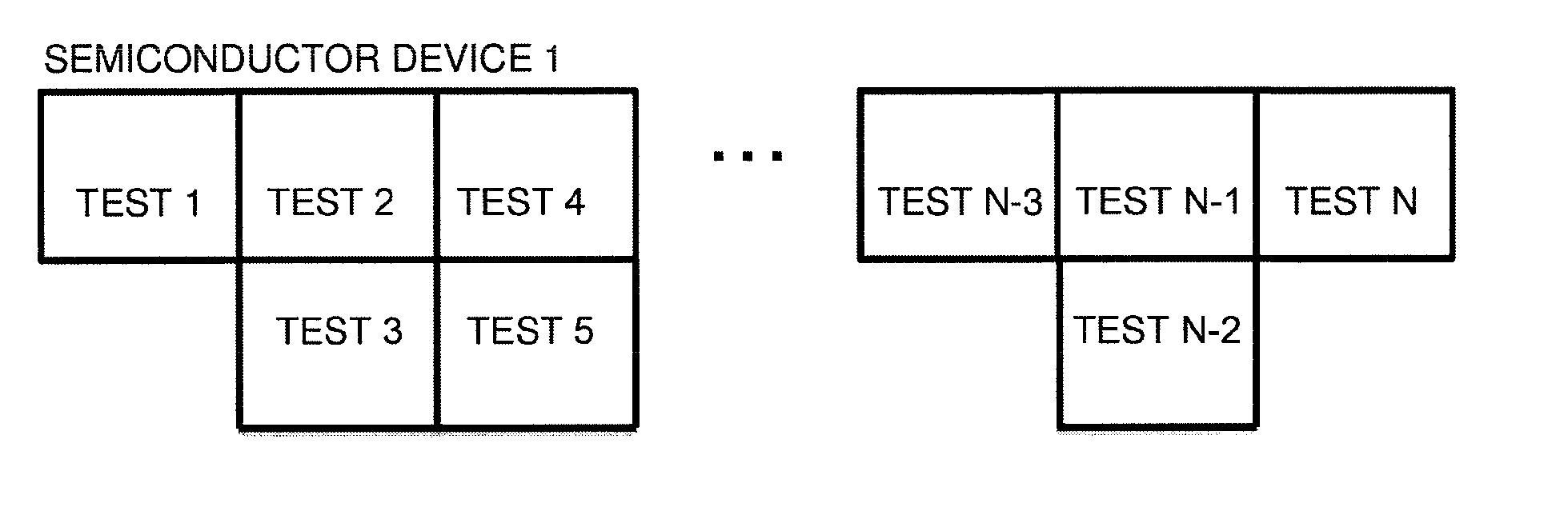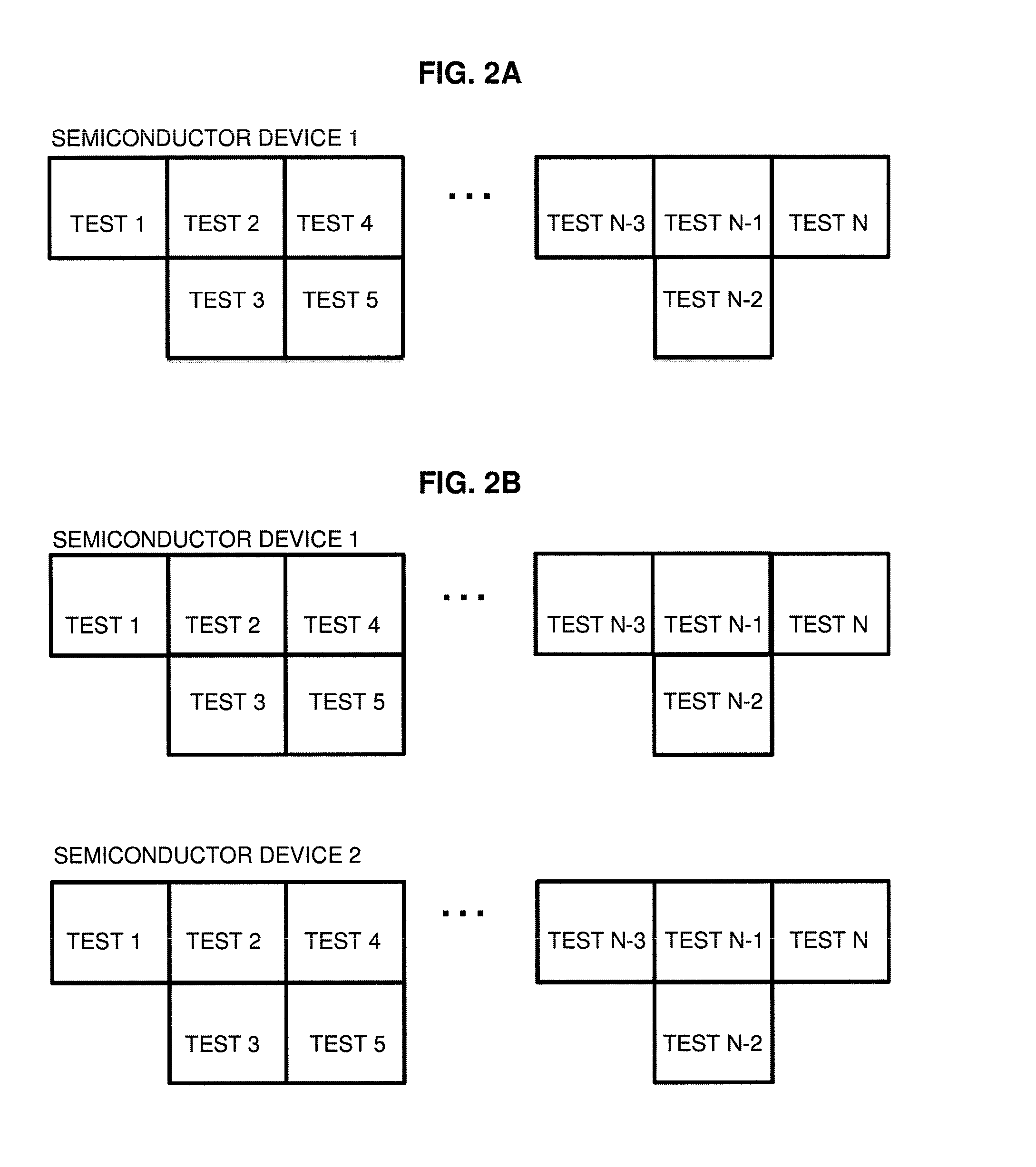Parallel concurrent test system and method
a parallel, test system technology, applied in the direction of electronic circuit testing, measurement devices, instruments, etc., can solve the problems of limiting the return on investment of such equipment, reducing the reliability of automation, and reducing the efficiency of automation, so as to achieve long test time, short test time, and high pin count
- Summary
- Abstract
- Description
- Claims
- Application Information
AI Technical Summary
Benefits of technology
Problems solved by technology
Method used
Image
Examples
Embodiment Construction
[0054]In view of the foregoing, the present disclosure, through one or more of its various aspects, embodiments and / or specific features or sub-components, is thus intended to bring out one or more of the advantages as specifically noted below. The present disclosure provides a description of a control system and related methodology for conducting efficient Parallel Concurrent Test (PCT) semiconductor testing using automated and robotic semiconductor test equipment.
[0055]In general, the exemplary embodiments disclosed herein involve semiconductor devices being tested that are generally characterized as having a high complexity and a high pin count. Such semiconductor devices conventionally require a long test time. Additionally, the handler(s) referred to herein generally refer to Pick-and-Place (PnP) handlers, and not to gravity feed handlers.
[0056]An exemplary non-limiting illustration of a concurrent testing process is illustrated in FIG. 2A. In this figure, Test 2 and Test 3 are...
PUM
 Login to View More
Login to View More Abstract
Description
Claims
Application Information
 Login to View More
Login to View More - R&D
- Intellectual Property
- Life Sciences
- Materials
- Tech Scout
- Unparalleled Data Quality
- Higher Quality Content
- 60% Fewer Hallucinations
Browse by: Latest US Patents, China's latest patents, Technical Efficacy Thesaurus, Application Domain, Technology Topic, Popular Technical Reports.
© 2025 PatSnap. All rights reserved.Legal|Privacy policy|Modern Slavery Act Transparency Statement|Sitemap|About US| Contact US: help@patsnap.com



